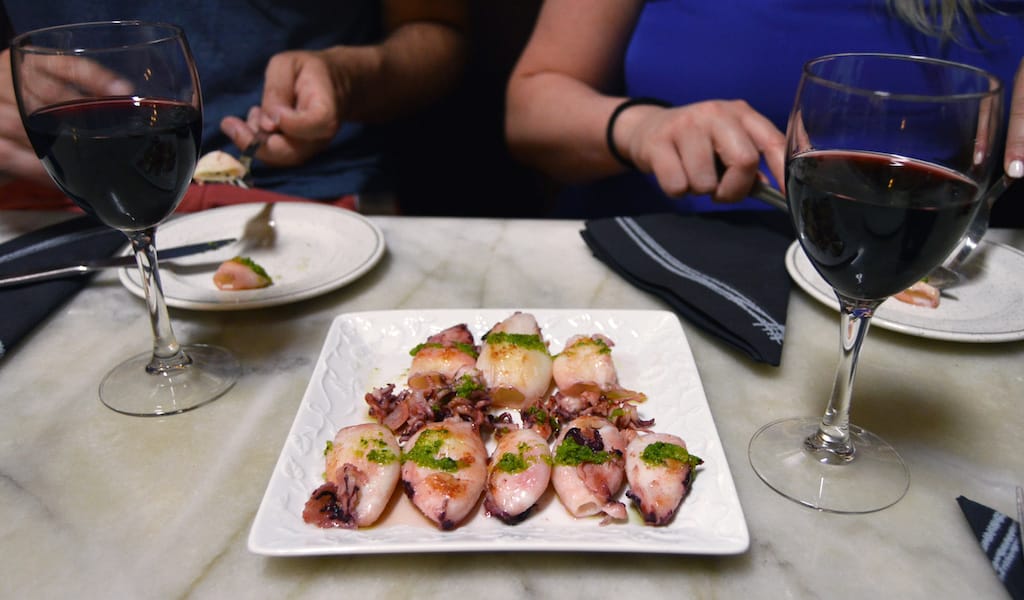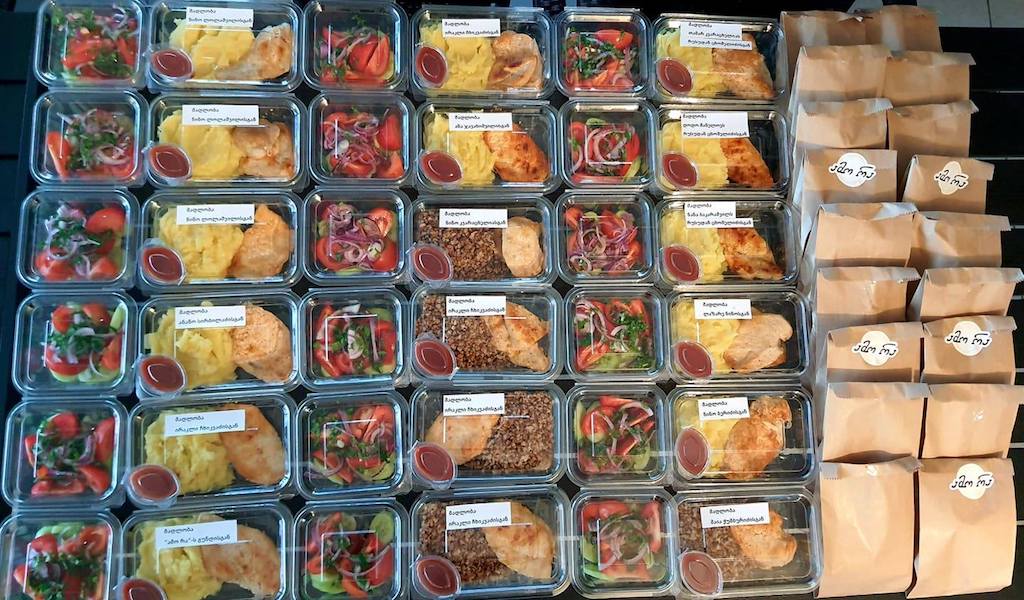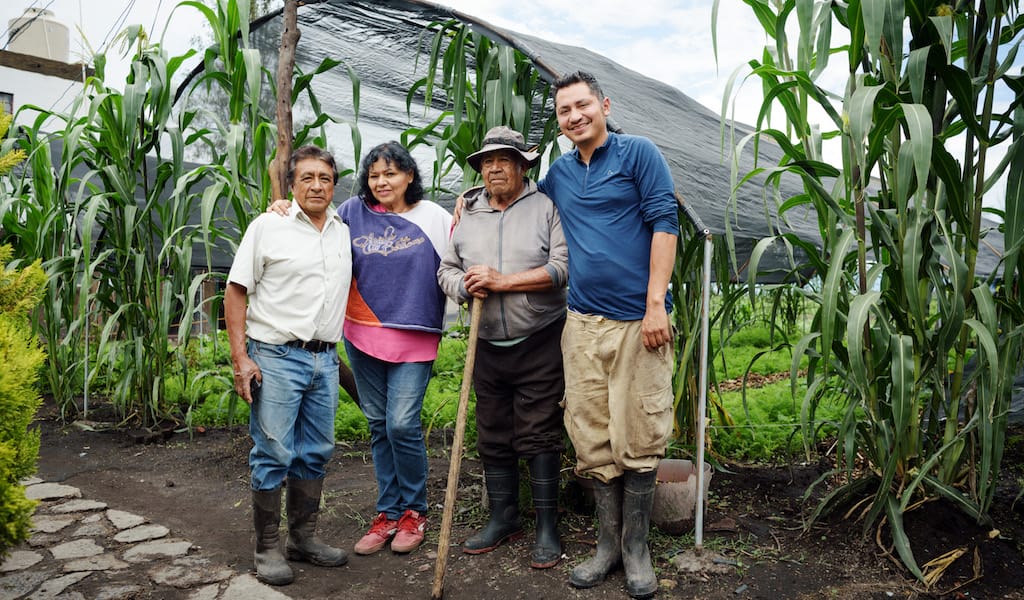One communal dish in the middle of the table attracting various fingertips and forks – it’s an image common to numerous countries. From tagine in Morocco to wot in Ethiopia, mezes in the Mediterranean and the Middle East to banchan in Korea, sharing plates is a defining feature of many culinary cultures. In Spain, the quintessential shared-plate experience is tapas, with paella a close second.
And what’s not to love about eating this way? It brings us together, it’s more indulgent, as it gives everyone the chance to try everything, and it reduces food waste. Furthermore, research has found that eaters who consumed food together from a common plate or bowl are more cooperative and less competitive, making it easier for them to agree on controversial issues.
But in the wake of the pandemic, and the new health regulations that come with it, sharing plates may become a thing of the past. How will restaurant and bar owners deal with the new health regulations? How much will gastronomic customs change? Will these changes be temporary or long lasting? To begin to answer these questions, we caught up with the owners of some of our favorite bars and restaurants in Barcelona.

The quintessential Spanish style of eating is tapas – it’s basically communal snacking. In this country of 47 million, there are 300,000 bars, the largest number per capita in the world. And in all these eateries, having tapas is nearly a sacred social rite. With the current Phase 3 de-escalation regulations, Spanish bars and restaurants can offer 50 percent of their indoor and 75 percent of their outdoor seats as long as they respect social distancing between tables. “One of the great things about attending to half the costumers we usually have is that there’s more room to learn as we go how to manage our business according to the new policies and recommendations duly,” says Pau Raga, the manager of Lo Pinyol, a bodega in Gràcia.
The bar actually debuted a new tapas menu a week before the state of emergency was officially declared by the government. “Despite the bad timing, we have decided not to change it as the new dishes are easily adaptable to individual plates,” she explains. “Except when customers let us know that they belong to the same family, household or small social nucleus, the food comes out of the kitchen already divided into individual plates.”
So far the new set-up hasn’t led to any complaints. “It’s amazing to see how fast the clientele has adapted to the ‘new normal.’ I reckon that people were so eager to get out of their homes and socialize again in a bar that these new rules don’t really bother them,” Pau tells us.
“Being as touchy as we are in this country, if we have been able to give up on kissing and hugging temporarily, we can also get used to not having communal paellas for a while.”
While tapas are perhaps the best-known form of communal eating in Spain, paella is also traditionally enjoyed from the same dish. “Being as touchy as we are in this country, if we have been able to give up on kissing and hugging temporarily, we can also get used to not having communal paellas for a while,” says Miquel Pardo, the chef and owner of CruiX, one of the few restaurants in Barcelona that serves this Valencian specialty. Despite being famous across the world, not many people know that the proper way of eating paella is straight from the round pan where it has been cooked – the pan is placed in the center of the table, and each eater is given an individual wooden spoon. They all start eating from the perimeter of the pan, working their way towards the center. In fact, the original Valencian paella has nothing to do with touristy seafront restaurants and seafood – it’s made with green beans and rabbit, and was developed by inland farm laborers and shepherds, who would cook it over a bonfire and eat it with no tableware.
Outside the Valencian Community, though, this well-known dish is almost always served on individual plates and eaten with a fork. According to Miquel, the Spanish government’s official guidelines don’t go into much detail about communal eating: It’s recommended to split tapas into individual portions but there is no mention of the traditional Valencian way of having paella. “Like we used to do before the pandemic, we always ask our guests how they want to have the dishes they’ve ordered. Personally, I love eating the paella from the pan as it brings people together and is more sensuous than when consumed from the plate. The pan’s coated steel gives the rice a very interesting extra layer of umami flavor. It’s pure magic!” he explains.
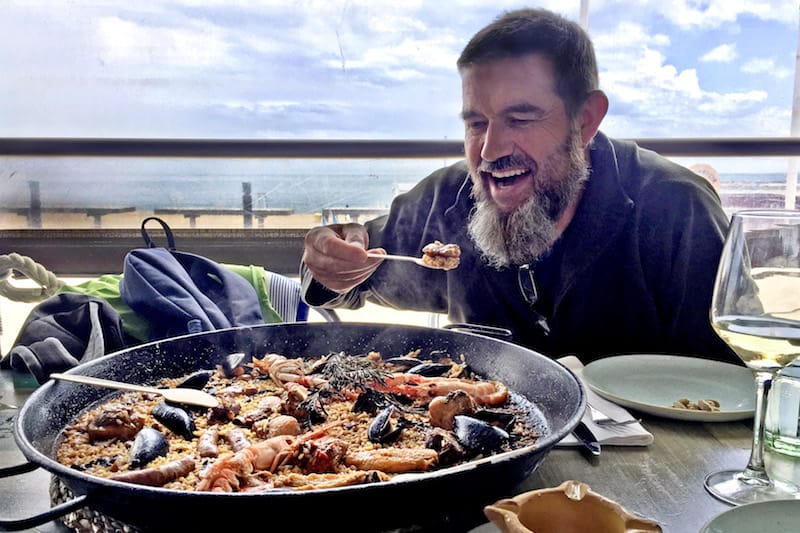
In Catalonia, our most traditional and beloved glass wine pitcher, the porrón, involves everybody drinking from it, albeit without touching the glass or ceramic spherical glass bottle, which has a long neck and conical spout, with their lips. This type of communal drinking accompanies lunches and dinners, and requires a special technique – the arm that holds the neck has to be totally extended since the longer the flow is, the better. Catalan families love this drinking gadget and, until the mid-20th century, every single household had one.
More recently, prior to the coronavirus pandemic, it was only brought out for large group meals such as barbecues or calçotades. It could also be found at traditional restaurants like Cal Boter in Gràcia. We ask Encarna Navarro, one of its owners, if the porrón has disappeared from her dining tables during this new era of masks, latex gloves and social distancing. “It hasn’t and, fingers crossed, it never will. Our clientele decides between the porrón or individual glass. It’s such a regional way of drinking that it’s not included in the Spanish governmental safety and hygienic measures for bars and restaurants,” she explains. Just like with the cutlery, plates and glasses, the wine pitchers get washed twice. First in the dishwasher at the highest temperature, and then with a special alcohol-based spray. “The porrón has been around for hundreds of years. It has already survived so many pandemics, famines and wars. It’ll survive Covid-19 for sure,” Encarna adds confidently.
It seems that in this strange, post-lockdown life, the adage “sharing is caring” has been replaced by “splitting is caring.” Thankfully, all signs point to this being a temporary change. Communal eating will be back.
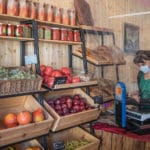 March 4, 2021 Coronavirus Diary
March 4, 2021 Coronavirus Diary
It has been 12 months since the novel coronavirus was first detected in Georgia. It was […] Posted in Tbilisi November 27, 2020 Essential Services
November 27, 2020 Essential Services
We have been watching Covid-19 sweep across the country like an invisible alien death […] Posted in Tbilisi September 3, 2020 Staying Afloat
September 3, 2020 Staying Afloat
Like a lot of us, the Galicia family was looking forward to 2020. Farming along the […] Posted in Mexico City
Published on June 25, 2020
Related stories
March 4, 2021
TbilisiIt has been 12 months since the novel coronavirus was first detected in Georgia. It was about the same time two CB colleagues, Celia from Lisbon and Chiara from Naples, arrived for a brief visit and joined us for what would be one of our last food walks of the year. Later, we went to…
November 27, 2020
TbilisiWe have been watching Covid-19 sweep across the country like an invisible alien death fog claiming hundreds of lives and snuffing out businesses, one by one. Some restaurants intent on survival have changed their menus to delivery-friendly offerings of shawarma, hamburgers and pizza. To save her lunch counter, 34-year-old Naia Gabelia has also chosen delivery,…
September 3, 2020
Mexico CityLike a lot of us, the Galicia family was looking forward to 2020. Farming along the city’s southern canals for generations, they are stewards of the chinampa agricultural system, one of the oldest on the planet. For the past eight years they have been slowly converting their man-made plot – built on top of the…







































